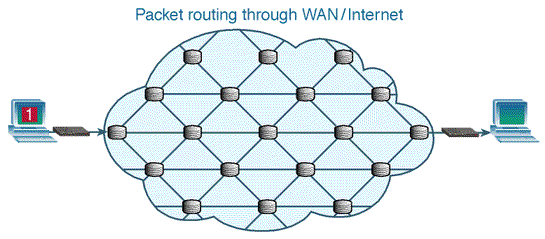Packet switching
In every packet is a destination address. When moving through the mesh of the network, at each juncture the packet relies on a switch, which is actually a high-speed computer, to read its destination address and output its signal to the next link in the direction of its destination. At the destination, all the packets are reassembled using the 'frame check sequence' number embedded in the frame that surrounds the packet.
Packets are small, so the time they take to go through any physical point is very short (time scales are in millionths of seconds). As a result, many packets can travel over the same point without noticeable interference. What sets packet-switched networks apart from circuit-switched networks is that no dedicated circuit from one user to another is ever physically established, and network resources are used very efficiently.
Packets and frames defined
Here are a couple of somewhat technical definitions that may required a little additional investigation, if you really want to understand what this is all about:
A packet is an electronic envelope containing the stuff from layers 3-7 of the ISO OSI model. The transport layer breaks up and numbers the packets. Each packet contains its source and destination address, thereby distinguishing itself from all other packets traversing the network, which allows it to share the network without interfering with other communication.
A frame is an electronic envelope containing the stuff from all seven layers of the ISO OSI model. Stuff from layers 1 and 2 are the true frame, then the packet (stuff from layers 3-7) is enclosed.
(Also see circuit-switched services.)

